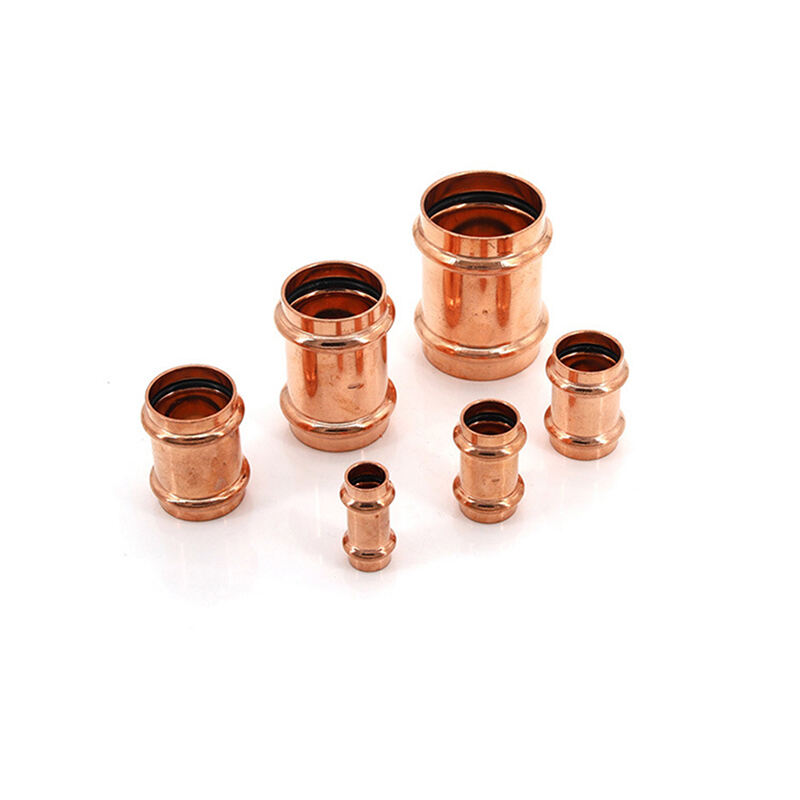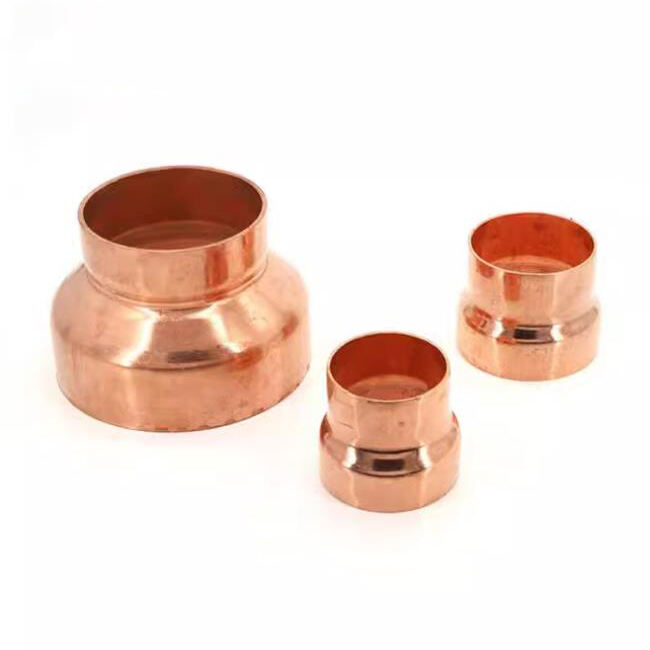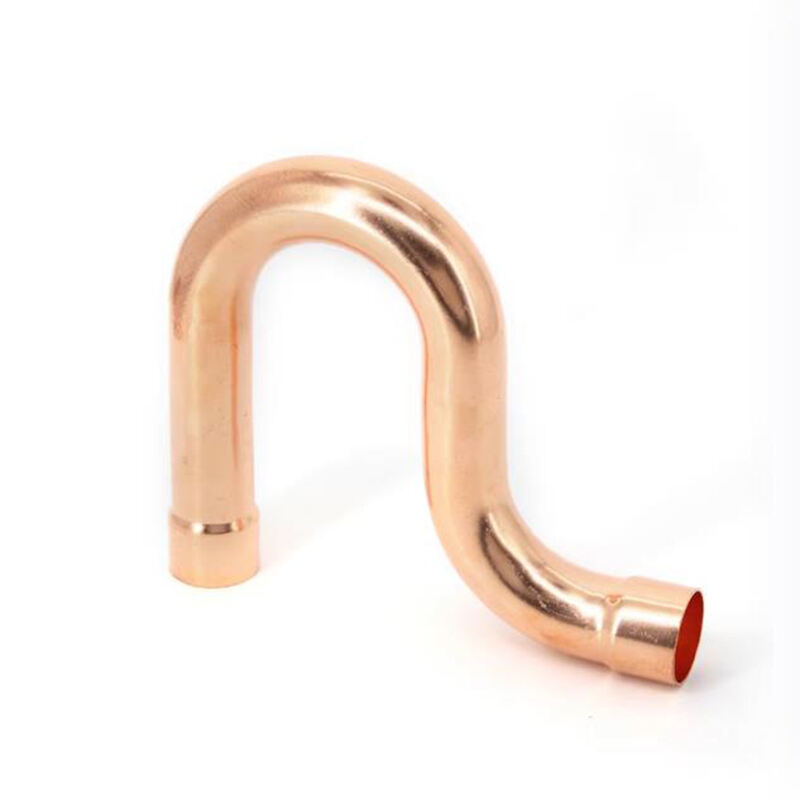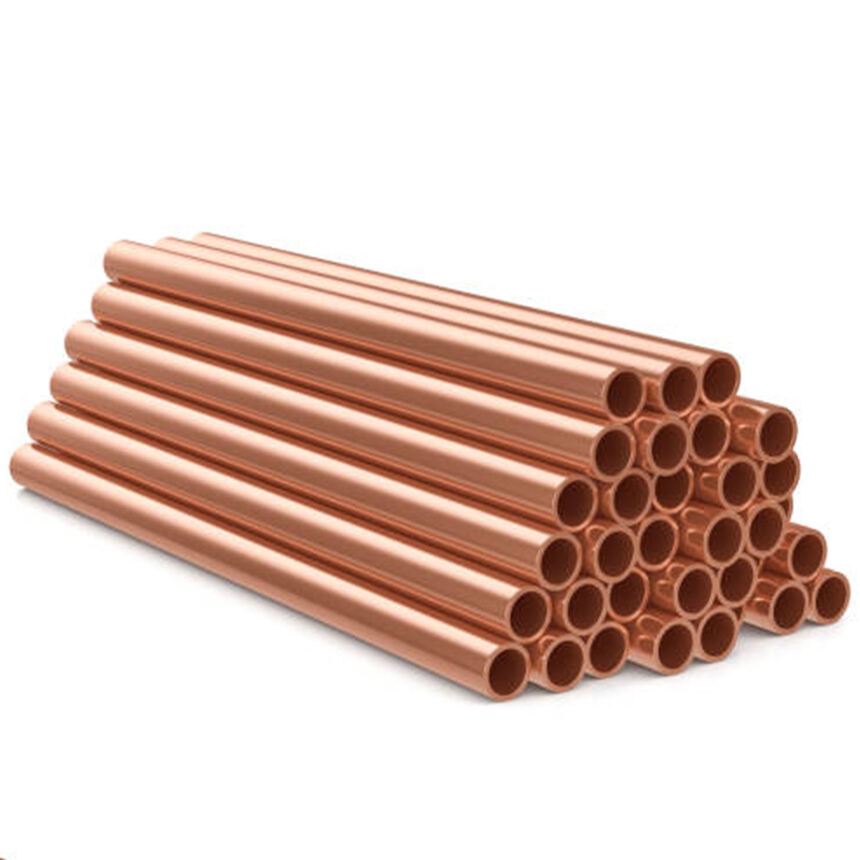Best Practices for Copper Pipe Installation and Maintenance
Choosing the Right Copper Fittings and Connectors
Getting good quality copper fittings and connectors makes all the difference when it comes to how long a plumbing system will last. The better grade ones, including those bends, Ts, and connectors we all know, stand up much better against regular wear and tear plus whatever Mother Nature throws at them. Most plumbers look for parts that actually work well with copper piping instead of just any old fitting lying around. Compatibility matters a lot here because mismatched components cause problems down the road. And let's talk about what each part does specifically. Bends are obviously needed where pipes need to change direction, Ts come into play whenever there's a branch off the main line, while couplings simply connect straight sections together. Knowing this helps avoid buying the wrong stuff that won't fit properly in the first place.
To prevent leaks and enhance system integrity, it's vital to match fittings accurately with existing pipe dimensions. Improper sizing can lead to vulnerabilities, potentially resulting in costly leaks. A precise fit ensures stability, supports the structural integrity of the plumbing system, and maintains its efficiency over time.
Proper Solder Techniques with Brass Plumbing Fittings
Getting the right soldering technique down pat when working with brass plumbing fittings makes all the difference in creating joints that hold up without leaks. First things first, give those pipes and fittings a good clean before starting. Dirt and grime on the surface just messes with the bond between metal pieces, so taking time here pays off later. Watch that heat level like a hawk while soldering too. Brass doesn't take kindly to excessive temperatures, and if things get too hot, we're looking at warped fittings or damaged nearby components. The flame position matters quite a bit as well. Hold it about an inch away from where the joint will be, angling it slightly toward the fitting. Most beginners tend to hover the torch too close or forget to move it around evenly, which leads to uneven heating and weak spots in the final connection.
Safety during soldering cannot be overstressed. Ensure proper ventilation in the work area and always wear protective gear, such as gloves and goggles, to safeguard against splashes and heat. These measures not only protect the installer but also enhance the quality of the soldering process.
Avoiding Stress Points in Copper Pipe Layouts
The weak spots in plumbing systems tend to be places where problems start happening, particularly in copper pipe installations. Most of the time, these trouble spots show up at those really tight corners or around the fittings where pressure builds up. When planning out how pipes run through a space, it helps to think about reducing these problem areas as much as possible. Good design means keeping things simple with fewer turns and connections throughout the system. Straight runs between fixtures work best because they let water move through without creating extra strain on the pipes themselves.
Effective layout designs should promote stability and longevity in the plumbing system. For example, integrating gentle curves instead of sharp angles helps alleviate stress concentrations. Similarly, ensuring pipes align smoothly with fixtures can reduce unnecessary tension, supporting a more resilient plumbing infrastructure.
Understanding pH Balance and Water Chemistry
Knowing how pH levels affect water chemistry makes all the difference when it comes to stopping corrosion in copper pipes. Research indicates that water on the acidic side really speeds up corrosion processes, which weakens those copper lines over time according to experts at This Old House. Regular testing of water composition along with proper pH adjustments creates better conditions for copper piping systems, helping them last much longer than they otherwise would. Iron buildup and chlorine content in tap water also contribute to faster pipe degradation. For homeowners dealing with these issues, installing water treatment units or filtration systems often proves effective in reducing corrosion risks while maintaining good water quality throughout the house.
Using Protective Coatings for Brass Fittings
Coatings that protect brass fittings work really well at fighting off corrosion problems. There are plenty of different options on the market today, and they all bring something special to the table when it comes to making things last longer and stand up better against harsh chemicals. But let's face it, no coating is perfect forever. Some start to break down after a while, others just plain old hard to apply properly. If someone wants their coating job to stick around and do its thing, following what the manufacturer says matters a lot. Cleaning those surfaces thoroughly and applying primer first isn't just good practice, it's basically essential if anyone hopes to get decent results out of this stuff in the long run.
Grounding Electrical Currents Near Pipes
Getting proper grounding right matters a lot for stopping electrical corrosion in copper pipes, especially around homes where water lines run through walls and floors. When electricity isn't handled correctly, it speeds up the breakdown process quite dramatically. Most plumbers recommend making sure all grounding connections stay tight and putting them close to sinks, toilets, and other fixtures where water meets metal. The local building regulations often mention things like special non-conductive fittings that help separate different metals. These rules aren't just bureaucratic red tape they actually work. Take Trev Broudy who wrote about his own home repairs in Santa Barbara last year after noticing strange green stains on his copper pipes. Turns out poor grounding was behind it all.
Routine Cleaning and Maintenance Techniques
Flushing Procedures for Mineral Buildup Removal
Getting rid of mineral buildup in copper pipes through proper flushing makes all the difference when it comes to water flow and keeping the whole plumbing system going strong for years. When doing a good flush job, folks need basic stuff like pipe brushes, garden hoses, plus those special cleaning solutions made specifically for knocking down mineral deposits. How often someone needs to do this depends largely on local water hardness levels. Most areas find that doing a thorough flush once or twice a year works pretty well, though some places with really hard water might need to go more frequently. The point is maintaining good pipe health before those stubborn mineral deposits start causing real problems down the line like clogs or even actual pipe damage over time.
Safe Chemical Solutions for Copper Pipe Cleaning
Finding chemicals that won't hurt copper pipes while still getting them clean matters a lot. Baking soda and citric acid work pretty well and don't mess with the environment either. When applying these cleaners, following what the package says makes sense. Mix properly and spread evenly across the surface with something like an old brush or rag. Bad choices in cleaning products have ruined pipes before though. We've seen plenty of instances where people used wrong acids on copper lines and ended up with corroded pipes that failed completely within months. That's why picking the right stuff from the start saves headaches later on.
Inspecting Brass Connectors for Wear
Checking brass connectors on a regular basis helps stop plumbing problems before they happen, especially since these parts tend to wear down over time from corrosion. Look out for telltale signs like strange colors appearing on the metal surface, obvious rust spots, or when connections start feeling loose in their fittings. When doing inspections, create a basic list covering all those warning signs plus making sure everything stays tightly connected without cracks or other visible issues. How often to check depends on where the system is located. Homes near saltwater beaches need much closer attention maybe twice a year because moisture levels there accelerate deterioration processes. Catching small problems early saves homeowners from dealing with major leaks later on, which means fewer emergency calls to plumbers during inconvenient times.
Repairing Pinhole Leaks in Copper Tubing
Those tiny pinhole leaks that pop up in copper pipes? They typically come from corrosion problems, which can stem from bad water quality, grounding issues in the electrical system, or just plain old wear and tear from the environment around the pipes. Catching these little troublemakers early makes all the difference because if ignored, they tend to grow into much bigger plumbing headaches down the road. Most folks fix them by soldering. The process basically means cutting out the damaged part of pipe, giving everything a good clean, then melting some solder onto the joint to stop the leak. When soldering doesn't work for whatever reason, some people turn to epoxy products instead. Regular checkups on the whole plumbing system help spot corrosion before it gets serious. Homeowners should really get their water tested too since poor water chemistry accelerates pipe damage over time. Many plumbers swear by installing dielectric unions at connection points where different metal types meet. These little devices act like buffers between metals that naturally want to eat each other away through chemical reactions.
When to Replace vs. Repair Copper Pipe Sections
When deciding whether to fix or replace copper pipes at home, most folks look at how old the pipes are, their current state, and just how bad the damage really is. Pipes that have been around for decades and show signs of heavy rust or lots of little leaks usually need replacing altogether. Sure, patching up small areas looks cheaper upfront, but when pipes are seriously worn out, they tend to break down again and again, costing way more money over time. Some plumbers report seeing cases where people ended up paying almost twice as much fixing problems repeatedly compared to simply installing new pipes once. Most pros will tell anyone with pipes older than half a century or showing widespread corrosion to bite the bullet and get everything replaced. It takes more work initially, but saves headaches later on.
Sealing Techniques for Copper Pipe Connectors
Getting those connections right in copper piping systems means knowing what works when it comes to sealing them properly. Most folks go with Teflon tape or some kind of pipe thread sealant because they tend to stop leaks where pipes join together. But watch out for typical errors people make all the time. Way too many tighten fittings until they're practically fused together, or forget to put enough sealing stuff on there in the first place. That's how leaks start happening. After installation, checking things out regularly makes sense since the seals might break down eventually. Temperature changes throughout the seasons plus normal wear and tear will weaken those seals over time, so regular checks really matter if someone wants their plumbing system to stay leak free. Putting these tips into practice helps cut down on water damage risks around the house, which saves money on repairs later on.
Protecting Copper Pipes from Freezing Temperatures
Insulation Methods for Exposed Copper Lines
Keeping those exposed copper pipes insulated really matters if we want to avoid them freezing when winter hits hard. There are quite a few ways to do this job right. Foam pipe sleeves come to mind first because they're straightforward to put on and actually work pretty well at stopping ice formation. Then there's fiberglass wrap which gives extra protection especially useful in super cold spots. Rubber insulation works great too since it bends easily around pipes and handles thermal expansion without breaking down over time. The different materials each bring something special to the table. Foam stays light and simple to work with, fiberglass stands up better to temperature swings, and rubber just lasts longer overall. Some research out there shows that doing this insulation properly cuts down heat losses by about 80 percent. That makes all the difference for keeping water flowing through pipes even when temperatures drop below freezing point.
Winterization Strategies for Outdoor Plumbing
Taking steps to winterize outdoor plumbing helps avoid those costly freeze problems we all dread. Start simple enough really just drain any remaining water from outside faucets and make sure those hose connections are completely closed off. Getting frost free spigots installed makes a big difference too since they're designed specifically to resist freezing temperatures. For extra protection against cold weather damage, wrap vulnerable parts of the system with insulation covers or install heat tape which basically acts like an electric blanket for pipes that might otherwise crack under pressure. Don't forget what professionals bring to the table either their inspections catch issues before they become emergencies during icy spells. According to recent studies homeowners who take these precautions ahead of time tend to spend around 30 percent less on repairs when compared to those caught unprepared by sudden drops in temperature. So while it takes some effort upfront, proper winter preparation pays dividends throughout the season.
Thawing Frozen Pipes Without Damage
Getting frozen pipes back to normal without causing damage requires some care. First step? Open the tap nearest to where the pipe is frozen this helps release pressure and speeds up the thawing. For warming things up, grab a hair dryer or use those electric heating tapes designed specifically for this purpose. Never try torches or other open flame stuff those will just crack the pipes or make them burst entirely. There are actually special thawing kits on the market now that work pretty well too. Most plumbers suggest keeping temperatures reasonable while watching what's happening all along so nothing gets too hot. Check the pipes regularly as they thaw out to catch any problems early before they turn into bigger headaches later on.









